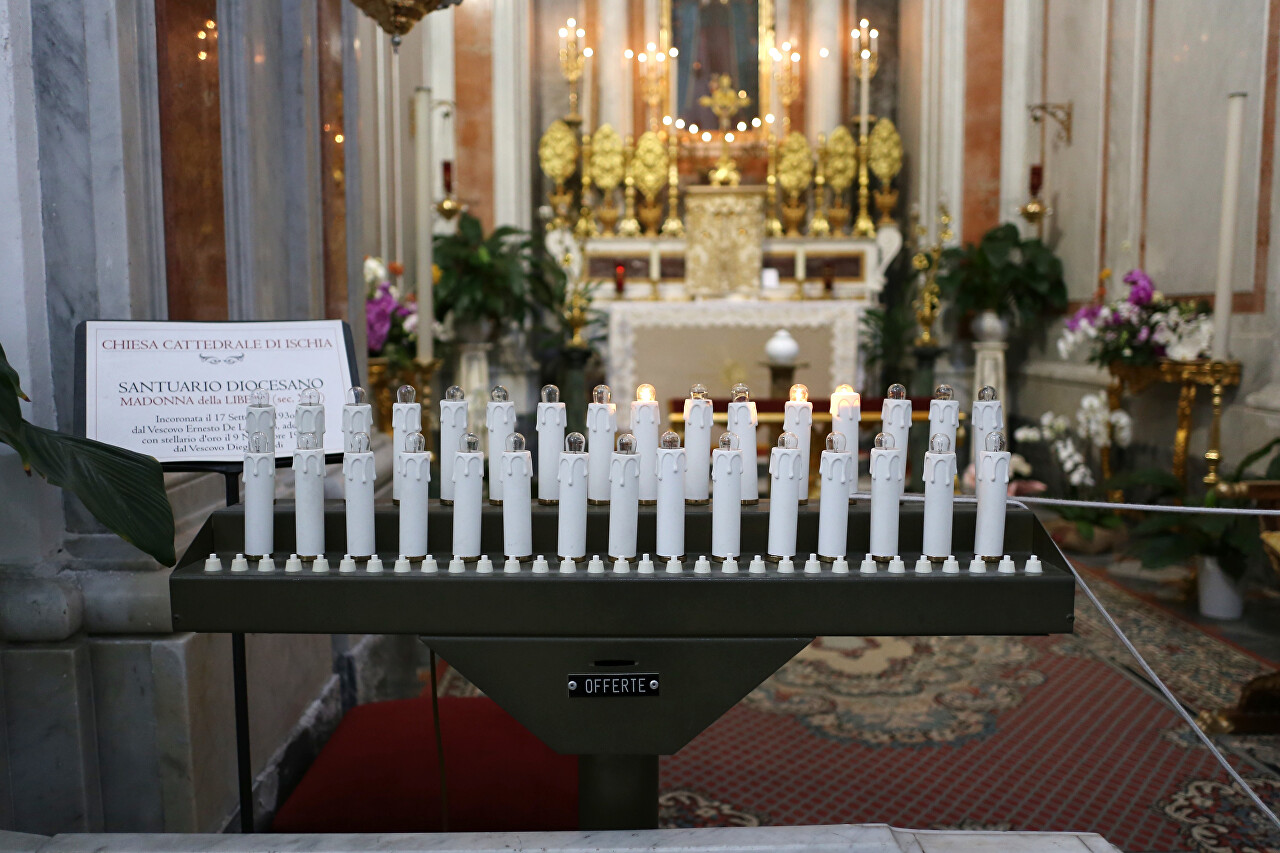Cattedrale Santa Maria Assunta, Ischia Ponte
A block from the bridge leading to the Aragonese castle is the church of the Assumption of St. Mary, built in 1752 in the Baroque style, although its history began almost five hundred years earlier.
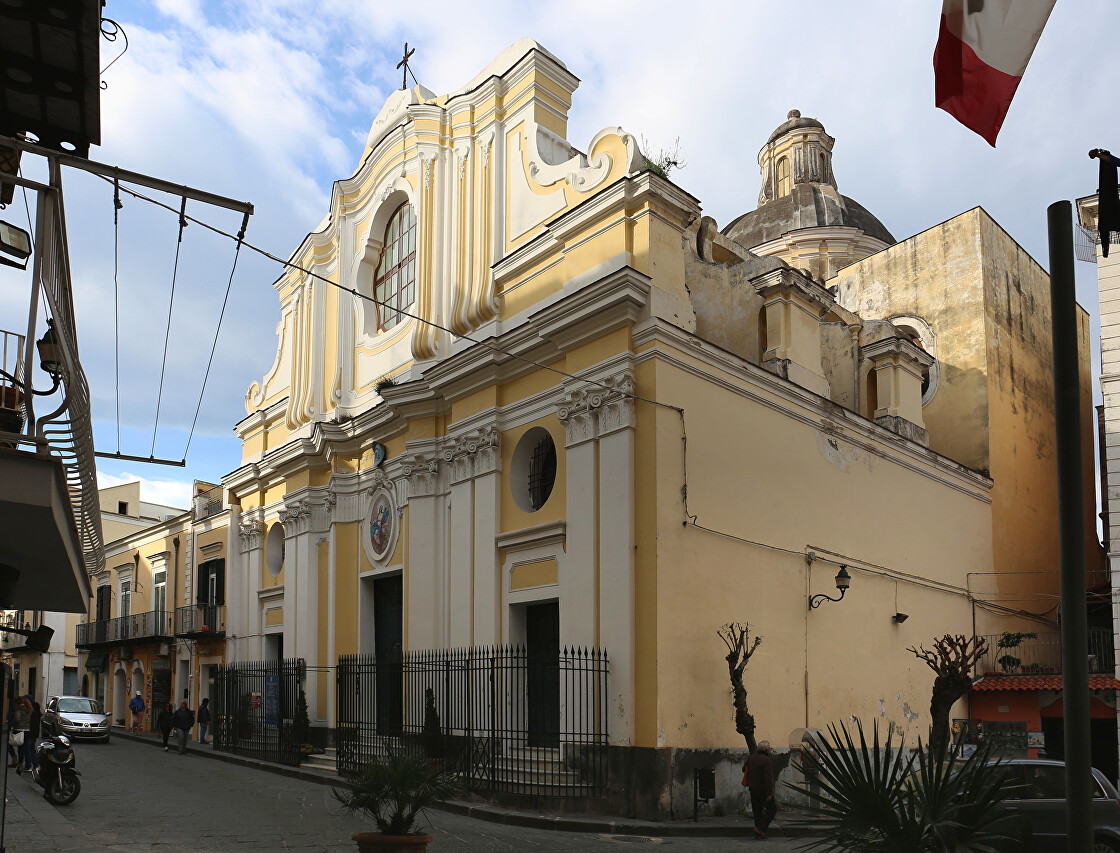
In 1388, the governor of Ischia, Giovanni Cosso of Anjou, died and in his memory, his son Pietro built an Augustinian monastery on this site. By the way, another son of the deceased governor is known as the "antipope" John XXIII.
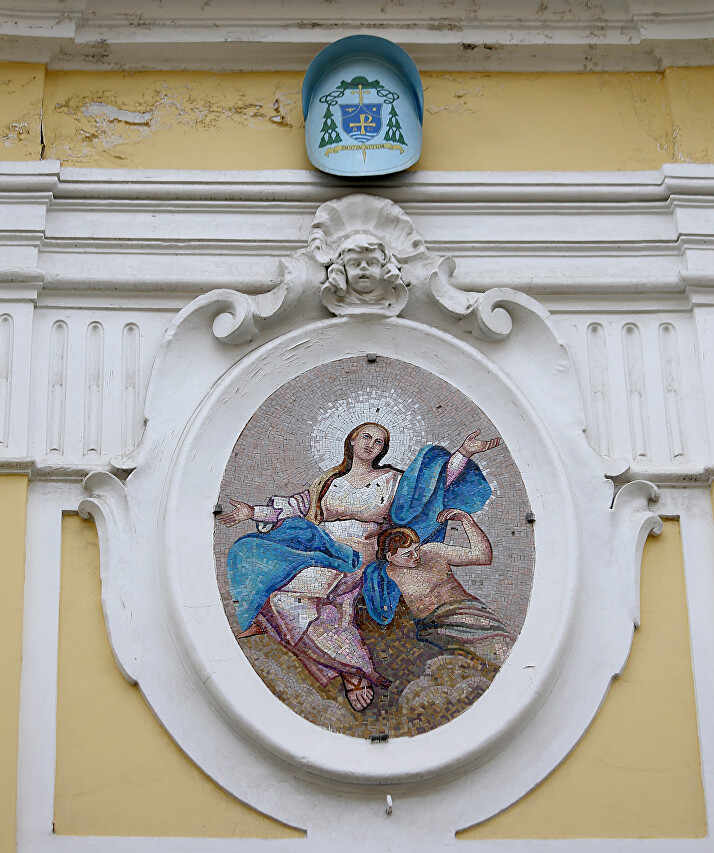
The monastery church was consecrated in the name of the Madonna della Scala. In 1596, a massive tower was built on the sea side, where the inhabitants hid during Saracen attacks. Over time, the tower began to function as a bell tower.
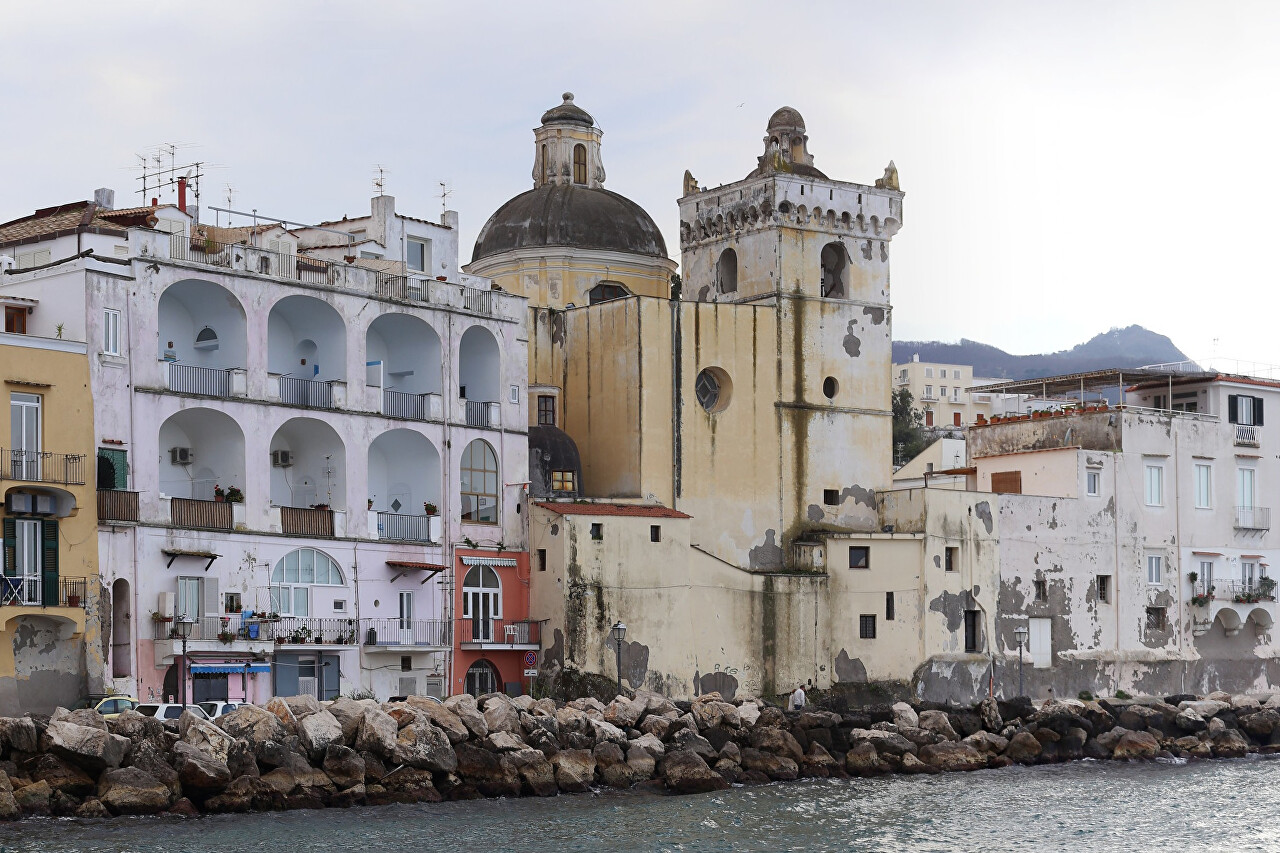
Over the centuries, the church was destroyed three times as a result of earthquakes and robberies, and each time it was restored, changing its appearance.

In 1809, the cathedral, which was located in the Aragonese fortress, was completely destroyed by the artillery of the British squadron that besieged the island. The surviving utensils and works of art were transferred to the monastery church, after which it was given the status of the cathedral of the Diocese of Ischia and a new name-the Assumption of St. Mary (Cattedrale Santa Maria dell'Assunta).
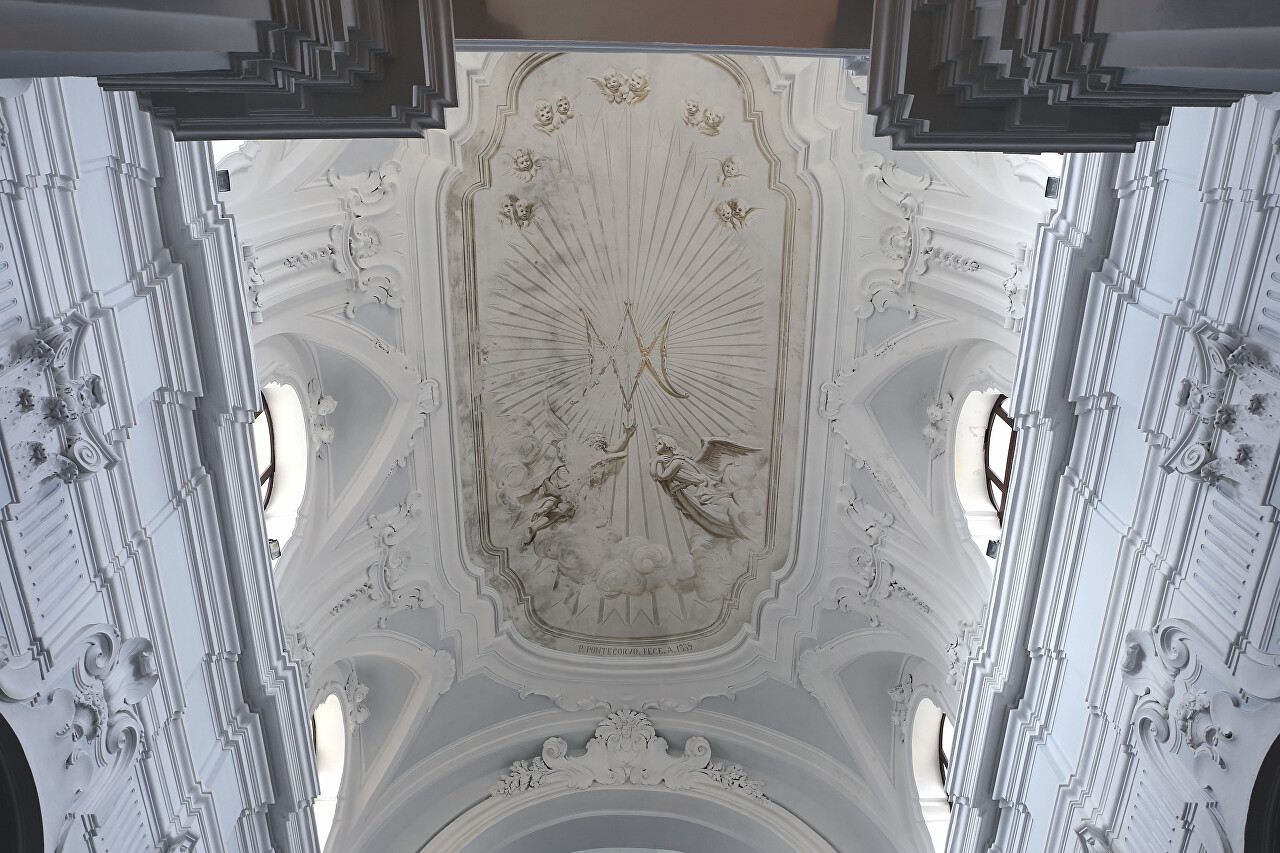
In the same year, the island was captured by the French, and Napoleon's Marshal Joachim Murat became king of Naples. Murat abolished the monastic orders, and the Augustinians left the island until Bourbon rule was restored. Nevertheless, the church received its current appearance under Murat, in 1810 the facade and interiors were decorated in the Baroque style. But in general, the interior of the church looks quite modest, in contrast to the Church of the Holy Spirit standing opposite.
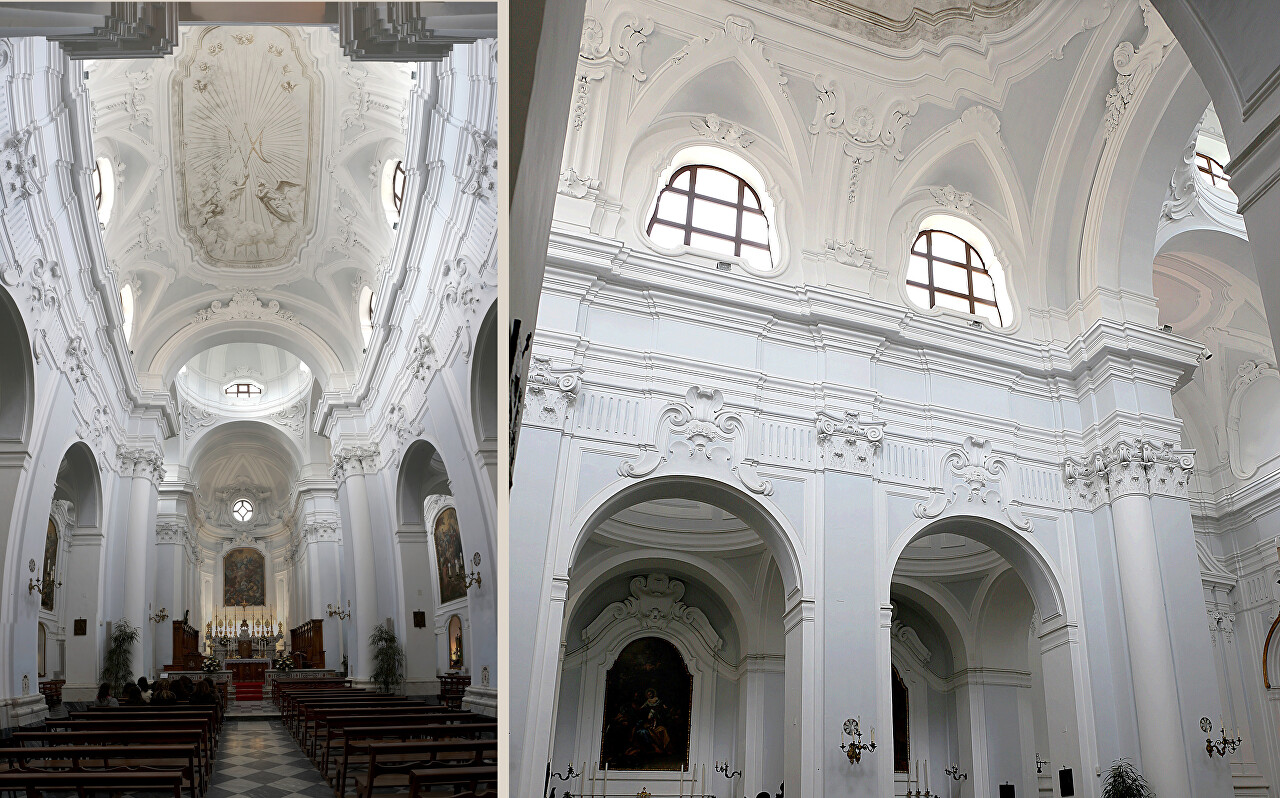
The main altar was made of marble in 1746-1764 for the cathedral in the Castle of Aragon and after its destruction was dismantled and restored in a new place.
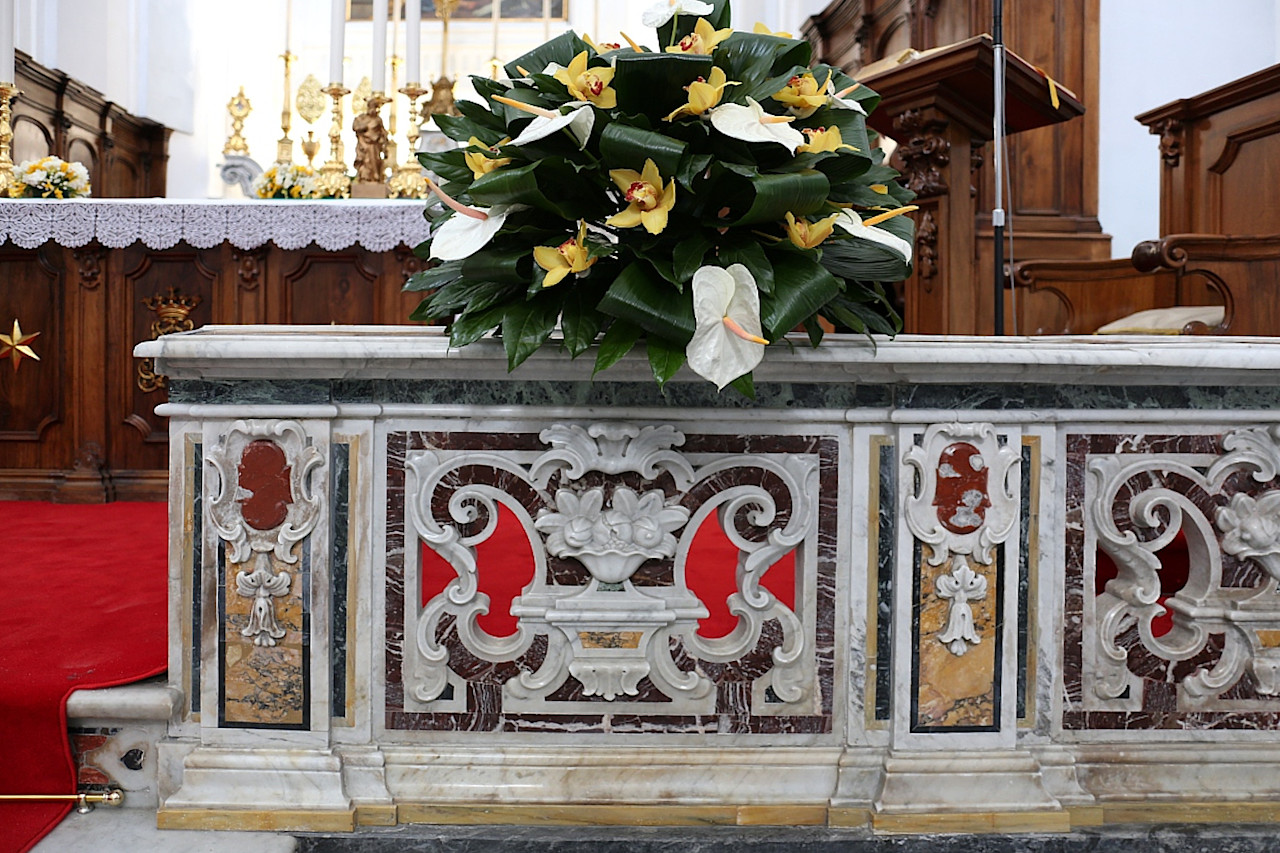
The altar is decorated with a painting of the Assumption of the Blessed Virgin Mary, painted in 1759 by the talented singer Pozzuoli Giquinto Diano.
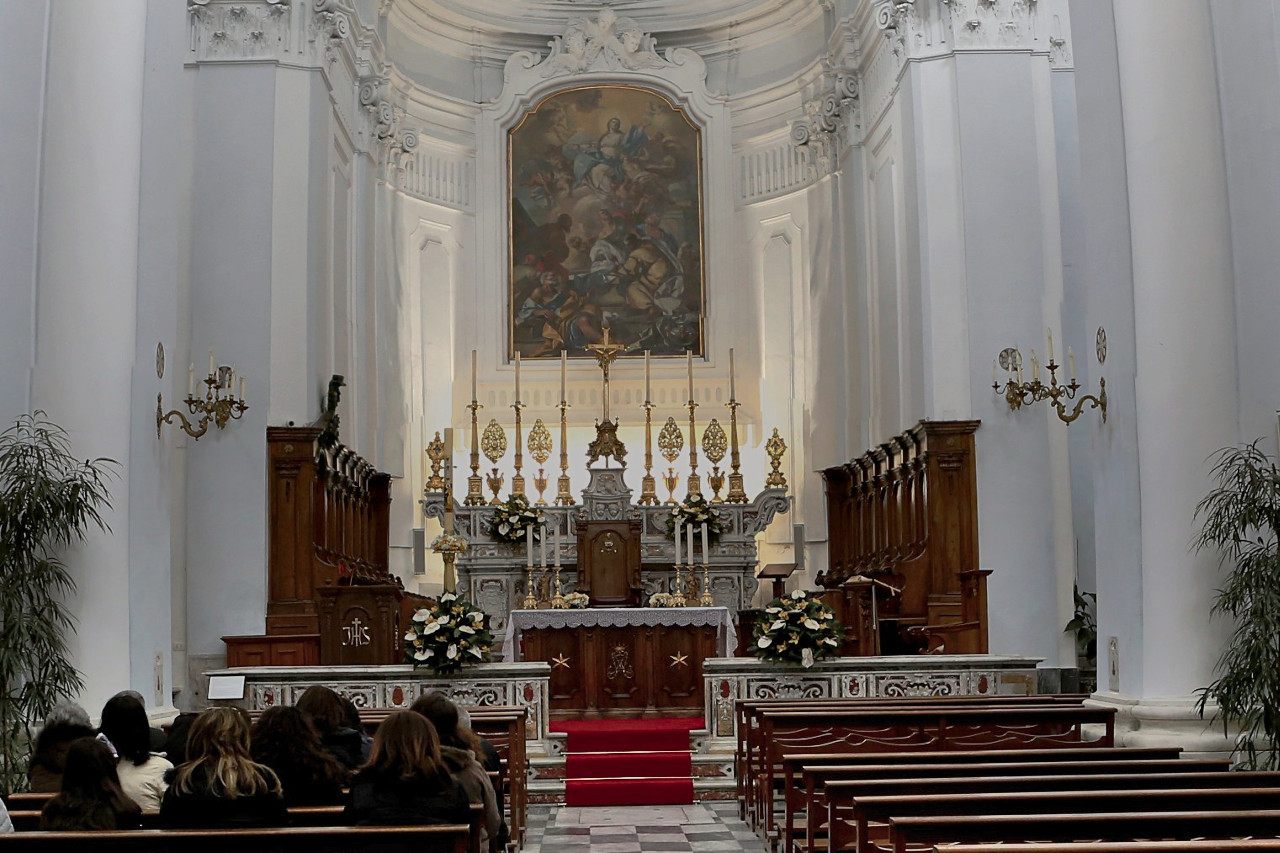
The walls of the church are decorated with other hymns of Diano: "Annunciation", "Holy Trinity" and others. Several paintings belong to the virtuoso brushwork of the Iscian artist Alfonso di Spigna.
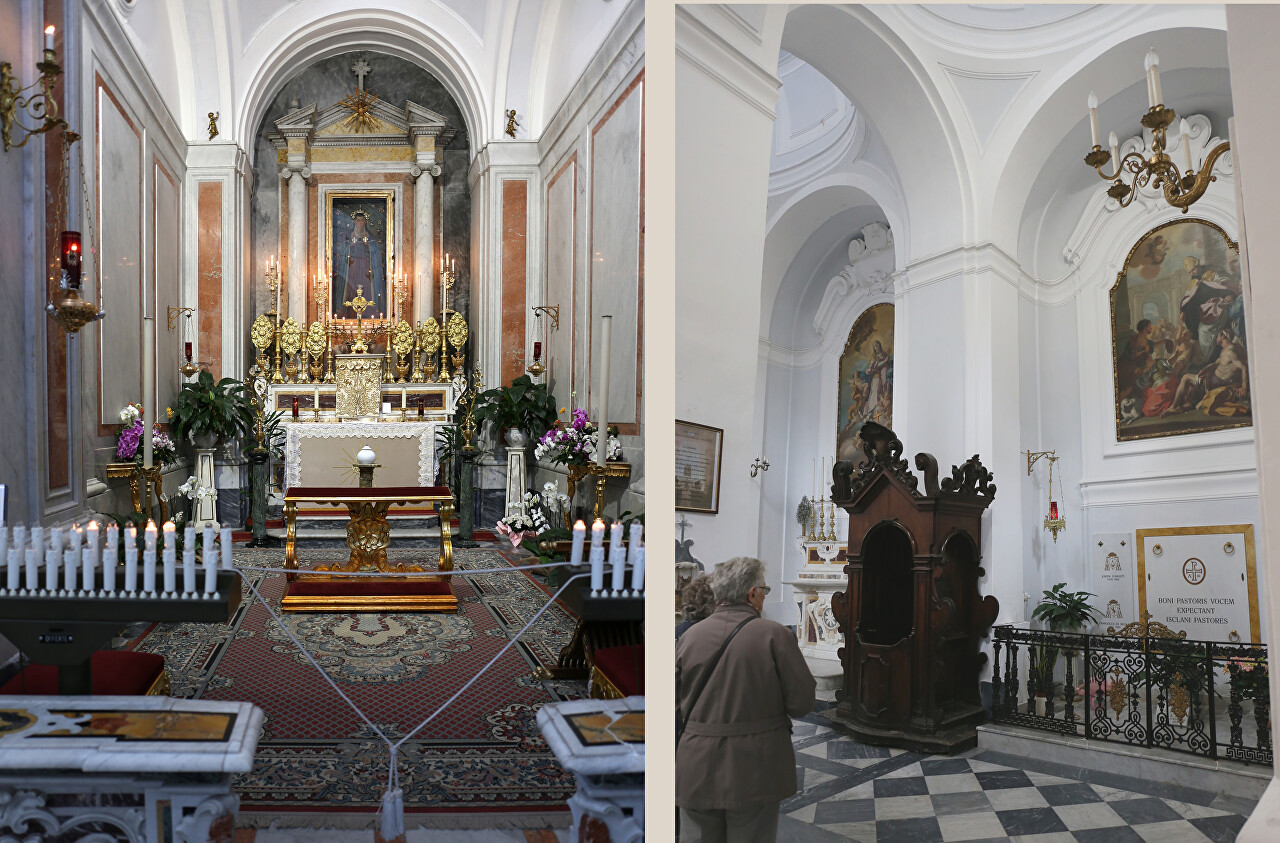
In a niche to the right of the altar is a wooden polychrome statue of Saint Restituta Africana, a Christian woman executed in Carthage in the third century. In the fifth century, the monks brought her relics to Ischia and since then, the Holy Restituta is considered the patroness of the diocese of Ischia and Procida.
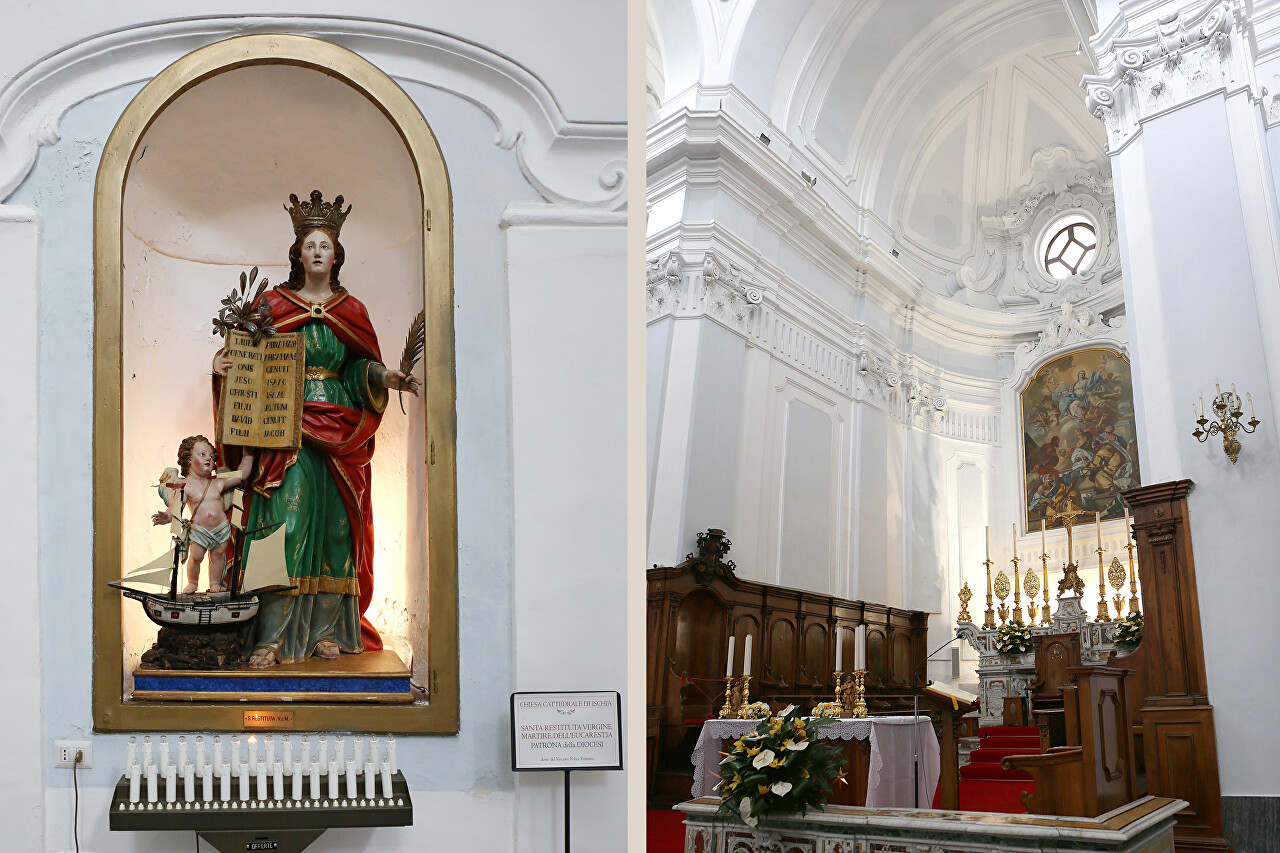
Technological progress does not bypass religious institutions - candles are electric and lit at the touch of a button. The rejection of wax candles makes practical sense - the interiors are free from soot and retain a fresh look for a very long time.
